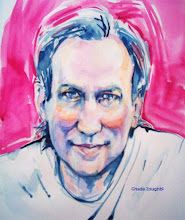Queen Nanny and her brother Captain Cudjoe blazed a freedom trail in Jamaica
Not unlike Ghana's matriarch / queen mother Yaa Asantewaa, who led a siege that starved the British soldiers, Queen nanny was an Ashanti matron who laid a foundation of pride and honour in Jamaica.
Queen nanny, leader of the Maroons
The Maroons were defiant Jamaican slaves who fled their oppressive existence on plantations and formed their own communities in the rugged, hilly interior of the island. They were considered skilled fighters and hard to defeat. Under Spanish rule, up to the 1650s, slaves escaped and intermarried with the native islanders, Arawaks, in their communities. Later, when the British assumed control of the colony, more slaves were able to escape from plantations to join the two main bands of Maroons in Jamaica: Leeward and Windward Maroons, headed respectively by Nanny of the Maroons and Captain Cudjoe.
The Maroons mainly consisted of people from the Akan region of West Africa. The Ashante tribe, from which Nanny came, lived in this region. However, slaves originating from other regions of West Africa joined the Maroons in their escapes. For over 150 years, the Maroons helped to free slaves from the plantations whilst they damaged land and property belonging to the plantation owners.
Nanny was born c. 1686 in Ghana, Western Africa, into the Ashanti tribe, and was brought to Jamaica as a slave.[citation needed] It is believed that some of her family members were involved in intertribal conflict and her village was captured. Nanny and several relatives were sold as slaves and sent to Jamaica. Upon arrival in Jamaica, Nanny was likely sold to a plantation in Saint Thomas Parish, just outside of the Port Royal area. Such plantations grew sugarcane as the main crop, and the slaves toiled under extremely harsh conditions.
As a child, Nanny was influenced by other slave leaders and maroons. She and her brothers, Accompong, Cudjoe, Johnny and Quao ran away from their plantation and hid in the Blue Mountains area of northern Saint Thomas Parish. While in hiding, they split up to organize more Maroon communities across Jamaica: Cudjoe went to Saint James Parish and organized a village, which was later named Cudjoe Town; Accompong settled in Saint Elizabeth Parish, in a community known as Accompong Town; Nanny and Quao founded communities in Portland Parish. She was married to a Maroon named Adou, but had no children.
Nanny and her brothers became folk heroes. The most famous of her brothers, Cudjoe, went on to lead several slave rebellions in Jamaica with the aid of her other brothers.
By 1720, Nanny and Quao had settled and controlled an area in the Blue Mountains. It was given the name Nanny Town, and consisted of the 500 acres (2.4 km²) of land granted to the runaway slaves. Nanny Town had a strategic location as it overlooked Stony River via a 900 foot (270 m) ridge making a surprise attack by the British practically impossible. The Maroons at Nanny Town also organized look-outs for such an attack as well as designated warriors who could be summoned by the sound of a horn called an Abeng.
Maroons at Nanny Town and similar communities survived by sending traders to the nearby market towns to exchange food for weapons and cloth. The community raised animals, hunted, and grew crops, and was organized very much like a typical Ashanti tribe in Africa. The Maroons were also known for raiding plantations for weapons and food, burning the plantations, and leading slaves back to their communities.
Nanny was very adept at organizing plans to free slaves. For over 30 years, Nanny freed more than 800 slaves,[2] and helped them to resettle in the Maroon community.
Captain Cudjoe, super-hero of the Caribbean
Cudjoe, also known as Captain Cudjoe, was a Maroon leader in Jamaica, and the brother of Nanny of the Maroons. He has been described as "the greatest of the Maroon leaders."[1] In the discussion of important and outstanding leaders in history, one must include Captain Cudjoe. He refused enslavement and freed thousands of captives.
The Jamaican Maroons are descended from runaway slaves who established free communities in the mountainous interior of Jamaica during the long era of slavery in the island. African slaves imported during the Spanish period may have provided the first runaways, apparently mixing with the Native American Taino or Arawak people that remained in the country. Some may have gained liberty when the English attacked Jamaica and took it in 1655, and subsequently. For about 52 years, until the 1737 peace treaty with the British rulers of the island - which is still in force - the Maroons stubbornly resisted conquest.
The two main Maroon groups in the 18th century were the Leeward and the Windward tribes, the former led by Cudjoe in Trelawny Town and the latter led by his sister Queen Nanny (and later by Quao). Captain Cudjoe had endless energy and was greatly motivated to stay a free man. He was strong, courageous and relentless. Cudjoe was also a very skillful, tactical field commander and a remarkable leader.
When the British attempted to recapture the runaways, Cudjoe defeated them on every occasion. Not only did Cudjoe successfully defend his communities, but also, similar to what Harriet Tubman would do in the nineteenth century, he freed many captives by raiding Britain’s plantations. Sometimes his raids were non-confrontational, but most times they were vicious, bloody encounters.
Before he attacked a plantation, Cudjoe would send spies among the captives to gather information from them at the markets and on the plantations. Once his spies collected sufficient evidence of the slave-owners’ plans, they sent them to Cudjoe. Then he determined the time and place of his attacks. During his strikes, Cudjoe and his men burned down mansions, destroyed cane fields and killed many whites along with faithful slaves who refused to help him.
Cudjoe’s attacks were so devastating that many of the early English settlers abandoned their plantations and returned to England. He often killed faithful slaves during these attacks because he despised them. According to one of England’s commanders on the island, General Williamson, it was commonly said, “the British rules Jamaica by day and Captain Cudjoe by night.”
In an attempt to capture Cudjoe and the Maroons, British leaders built forts near Maroon communities. They imported Native American tracking specialists from Central America to hunt down the Maroons. In addition, they formed an army of more than 1,000 soldiers to fight Cudjoe’s weapon-deficient military.
However, even with the tracking specialists and formidable army, Cudjoe out-maneuvered the British commander when one of Cudjoe’s spies told the commander that Cudjoe established settlements in a particular valley. As the British soldiers marched into the valley, Cudjoe’s four-sectioned forces watched them from behind the natural boundaries. When Cudjoe’s men attacked the soldiers from all sides, the crossfire surprised and debilitated them. The British soldiers fled the area and left behind guns and supplies.
For the next decade, Cudjoe caused considerable damage to the slave structure of Jamaica. When he raided, he often burned sugar cane fields, houses and barns, and he continued to kill slaves who were loyal to their masters. This latter measure put a great deal of pressure on every African captive to abide by Cudjoe’s advances. Therefore, Cudjoe’s peer-pressure tactic led the British to distrust just about every captive on the island.
To finally stop Cudjoe, the British government planned an elaborate expedition against the Maroons. The British recruited every fighting-eligible man on the island to move against Cudjoe. However, after considering the fact that if all the men went to fight against the Maroons, there would be no one left to protect the women and children. The British had a serious dilemma and they did not know what to do.
Faced with a very disturbing problem, Governor Sir Edward Trelawney weighed the possibilities. Eventually, he decided not to attack Cudjoe. He, instead, opted to make a treaty of peace with the Maroons. To carry out Governor Trelawney’s orders, a rather large army escorted Colonel Guthrie to meet with Cudjoe in Maroon territory. Once he convinced Cudjoe and his men that he would neither attack nor trick them, Cudjoe met with the colonel.
After talking for an hour or so, both men worked out a satisfactory treaty. They agreed that the British must recognize the Maroons as an independent nation; that the Maroons receive a very large tract of land and would not have to pay any taxes on it. Maroon societies still exist in Jamaica today.
Popular Posts
-
Keta Ghana Fruit Stand - Photo by Peter Schnurman A friend once told me that India has over 600 varieties of Mango, which must make mango se...
-
Vibrant, warm and festive, Ghana represents a beacon of hope for Africa and the world. Here are some images from Googoliath: USA President B...
-
Pics of Hotties in Bikinis Alrighty lads and lasses, I'm off for a 5-day vacay to beautiful Orillia, Ontario, to celebrate my Mom's ...
-
Ghana Actresses Models Singers Goddesses Here are some of the most gorgeous, sexiest, and stunningly beautiful ladies in Ghana and women abr...
-
Portrait of An African Princess, by Floris Jespers Queen Kiya of Ancient Egypt African Queen - Photo by Nana Kofi Acquah Goddess Mawu and th...
-
West African Black Beauty extraordinaire!!! Here are some images of the stunningly beautiful Miss Universe Ghana 2010, the wondrous woman Kr...
-
Divine Ghana Actresses Models Singers Goddesses Dayan Kodua Billie-Richael Kwayie Awai Amidu! Bernice Thia MORE Divine Ghana Actresses Model...
-
Ghana recording artist Becca Ghana Culture Music Politics Art Life Here are a few stories making the headlines around Accra, Tamale and Kuma...
-
Talented and gorgeous Serena Williams, seen in silhouette Ten of the World's Ultra-Beautiful Ladies, presented alphabetically These ten ...
-
Sports Illustrated Swimsuit Edition models Damaris Lewis, Alyssa Miller and Kenza Fourati Glorious Damaris Lewis featured in Sports Illustra...
Ghana Rising
Wonders of Jamaica
African Music - The Blog of Samite
Green Mutual Fund Investing Info
Accra Conscious Forever blog
GhanaShowbiz.com
Elginism
GhanaToGhana | Ghana News Sports Infotainment
Subscribe to:
Post Comments (Atom)
Green Energy Stocks Search

Custom Search
GhanaSoccernet.com - Ghana Black Stars news
Green Maple Leaf

Canada Honours Nature














No comments:
Post a Comment